Gotham by Gaslight, the original 1989 Elseworlds story by Brian Augustyn and Mike Mignola, remains one of my all-time favourite Batman comics. It easily ranks amongst my top five. The Victorian Batman – or Earth-19 version, to use his correct designation – returned for a 1991 sequel titled Master of the Future before making further appearances in ‘Small Wonders’ (Countdown Vol 1 #40, July 2007), ‘Night of the Bat’ (Countdown Presents: The Search for Ray Palmer Vol 1 #1, January 2008), Countdown: Arena (December 2007), ‘Pressure Point’ (Booster Gold: Futures End Vol 1 #1, November 2014), and ‘Return of the Thunder’ (Convergence: Shazam! Vol 1 #2, July 2015). The Victorian Batman was also a playable character in the 2015 Infinite Crisis videogame, and his costume appeared in the Batman: The Brave and the Bold episode ‘Trials of the Demon!' (season 1 episode 15). But to my mind, the 1989 story remains the finest chapter in the Earth-19 Batman’s sporadic history. So how does the new animated film measure up to the original comic? Fair warning – this review contains spoilers.
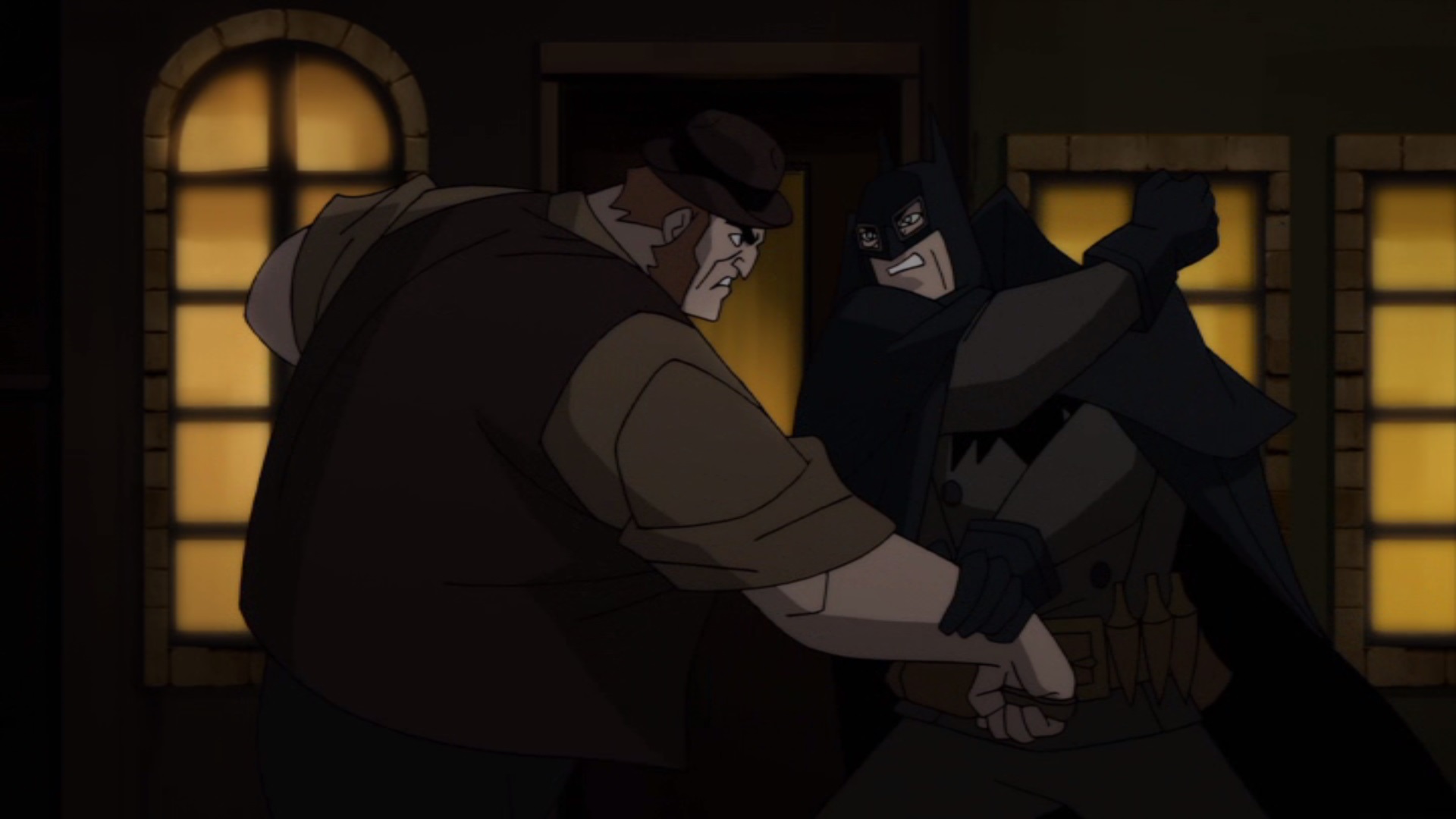
The first thing I should mention is that this movie is not a straightforward adaptation of the 1989 graphic novel. The film takes the basic concept behind that book – a Victorian Batman battling Jack the Ripper – and constructs an original story on the same premise. The narrative borrows a couple of plot beats from the 1989 comic, such as Bruce Wayne being falsely imprisoned for the Ripper’s crimes, and there are some visual nods to the original art work. But all in all, this is a very different story; one that's been approached with a markedly 21st century sensibility. Elements from Master of the Future have been mixed in with the first book, but the finished narrative is a substantial departure from either story.
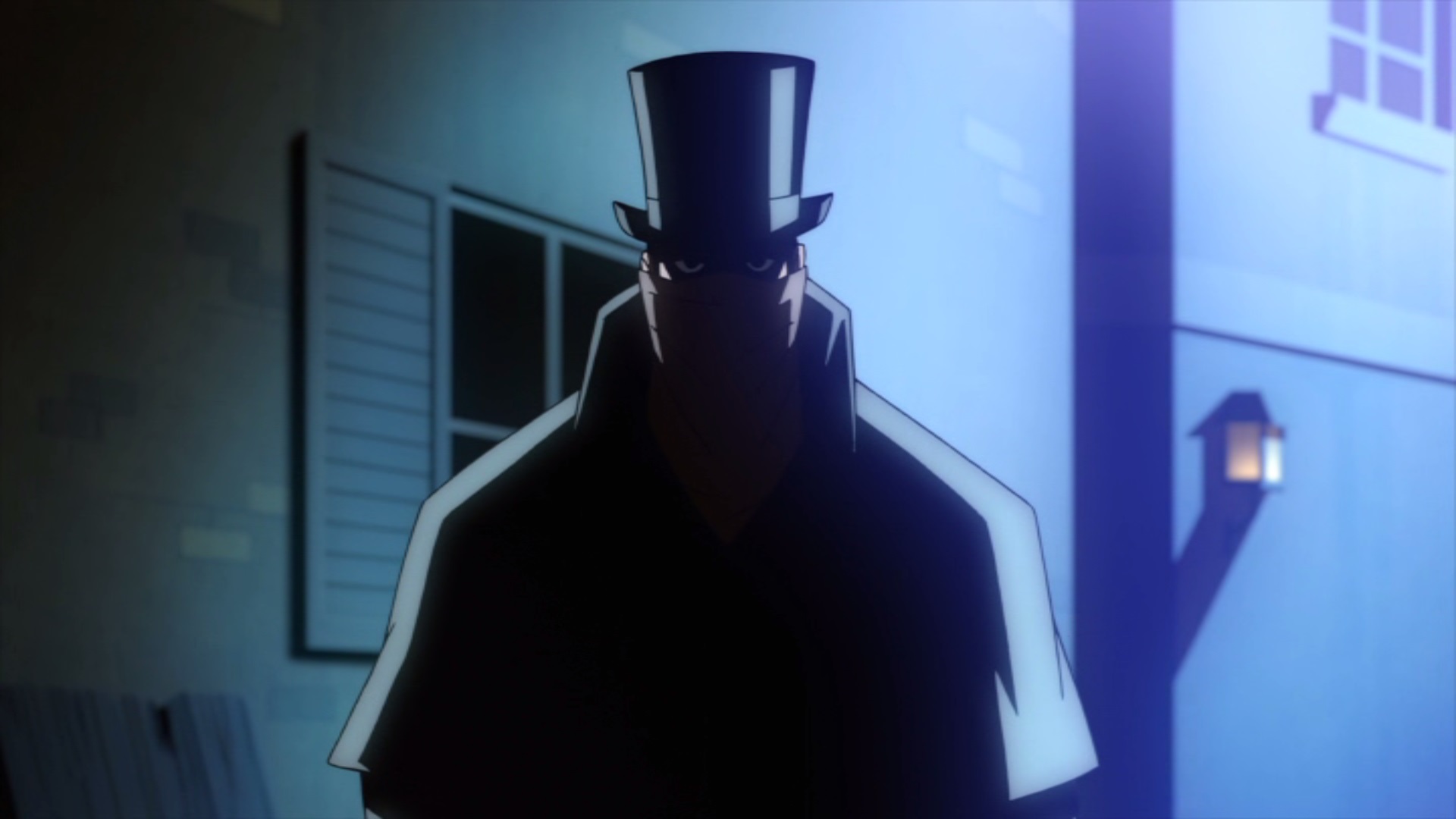
Both the Vienna sequence with Sigmund Freud and Bruce’s voyage from Europe to Gotham have been omitted entirely. So have the flashbacks of the Wayne murders and the plot twist connecting that event with the Ripper's backstory. Certain prominent characters that were exclusive to Augustyn’s books, such as Jacob Packer and Alexandre LeRoi, are also absent from the film. In their place we’re given Victorian reimaginings of more familiar players from the Batman mythos, such as Pamela Isley and the first three Robins. Comic fans may note that Isley’s portrayal here is at odds with how the Earth-19 version was depicted in Convergence: Shazam! Vol 1 #2 (the film version of Harvey Dent also differs from Mignola’s depiction, and Selina does not match the Earth-19 Catwoman from the Infinite Crisis game). Given the choice between seeing familiar characters reinvented in 19th century fashion, or seeing characters unique to Augustyn's original books, I personally would have preferred the latter.
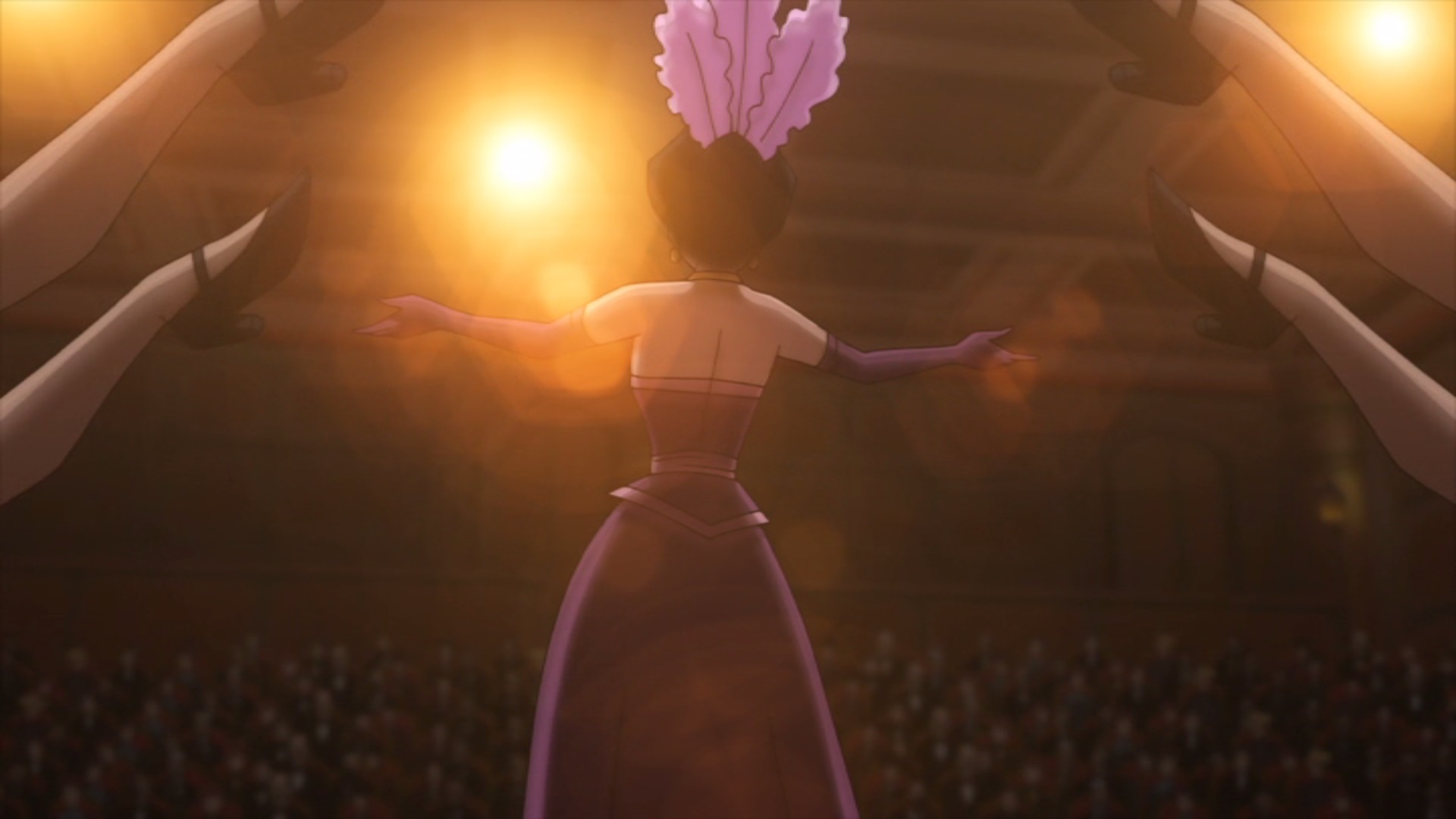
One of the broader issues I have with this film is its lack of authentic Victorian attitudes. The whole thing feels a tad too modern. The 1989 book attempted to capture the historical mentality by giving us a gentlemanly Bruce Wayne who was easily shocked by Jacob Packer’s lascivious remarks concerning women, and whose only concession to public mischief was attending a boxing match in a waterfront warehouse. By contrast, the Bruce Wayne in this movie has no qualms about cavorting naked with Selina Kyle on the floor of a hansom cab in the presence of two police officers. This behaviour is something the Modern Age Bruce might indulge to preserve his secret identity, but it feels inappropriate for his more reserved Victorian counterpart. The film version is also equipped with utilities that were absent from the 1989 book, including a grapple gun, smoke pellets, batarangs and a motorcycle. It’s true that steampunk elements were added to the Earth-19 universe in Master of the Future, but they weren’t present in the original Gotham by Gaslight. Their anachronistic inclusion in the film somewhat undermines the deconstructed grittiness that distinguished the 1989 book from its sequel.
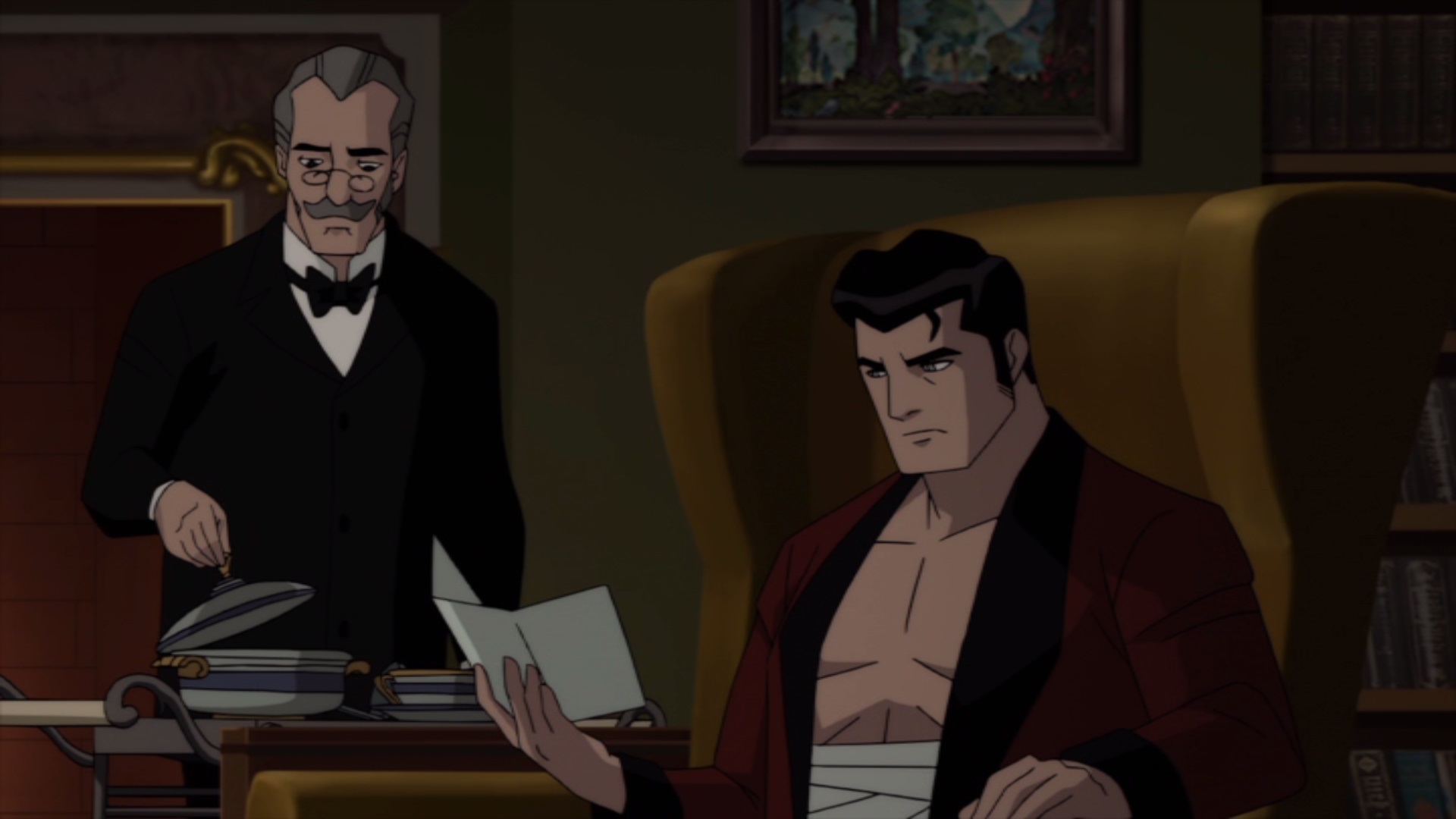
The depiction of the Ripper also diverges from its historical basis. In the 1989 comic Augustyn attempted to present the Ripper as more or less consistent with the perpetrator of the Whitechapel killings. He lurked in the shadows, targeted vulnerable street women and was no match for Batman when the two finally came face-to-face. The Ripper presented in this film is a far more conventional supervillain who displays prodigious strength and is easily capable of fighting Batman on equal footing. He doesn’t adhere to the MO of the real life Ripper, instead targeting both men and women in his directionless crusade against the city’s moral pollutants. Jacob Packer, the central antagonist in the 1989 book, is completely absent from the film. In his place the mantle of the Ripper is handed to Jim Gordon. This more or less works within the context of the film’s plot, though it does deprive the narrative of the satisfying twist linking the Ripper’s crimes to the deaths of Bruce’s parents. I understand the filmmakers wanting to put a new spin on the villain and preserve the air of mystery, but I still find the original version to be grittier and more psychologically compelling.
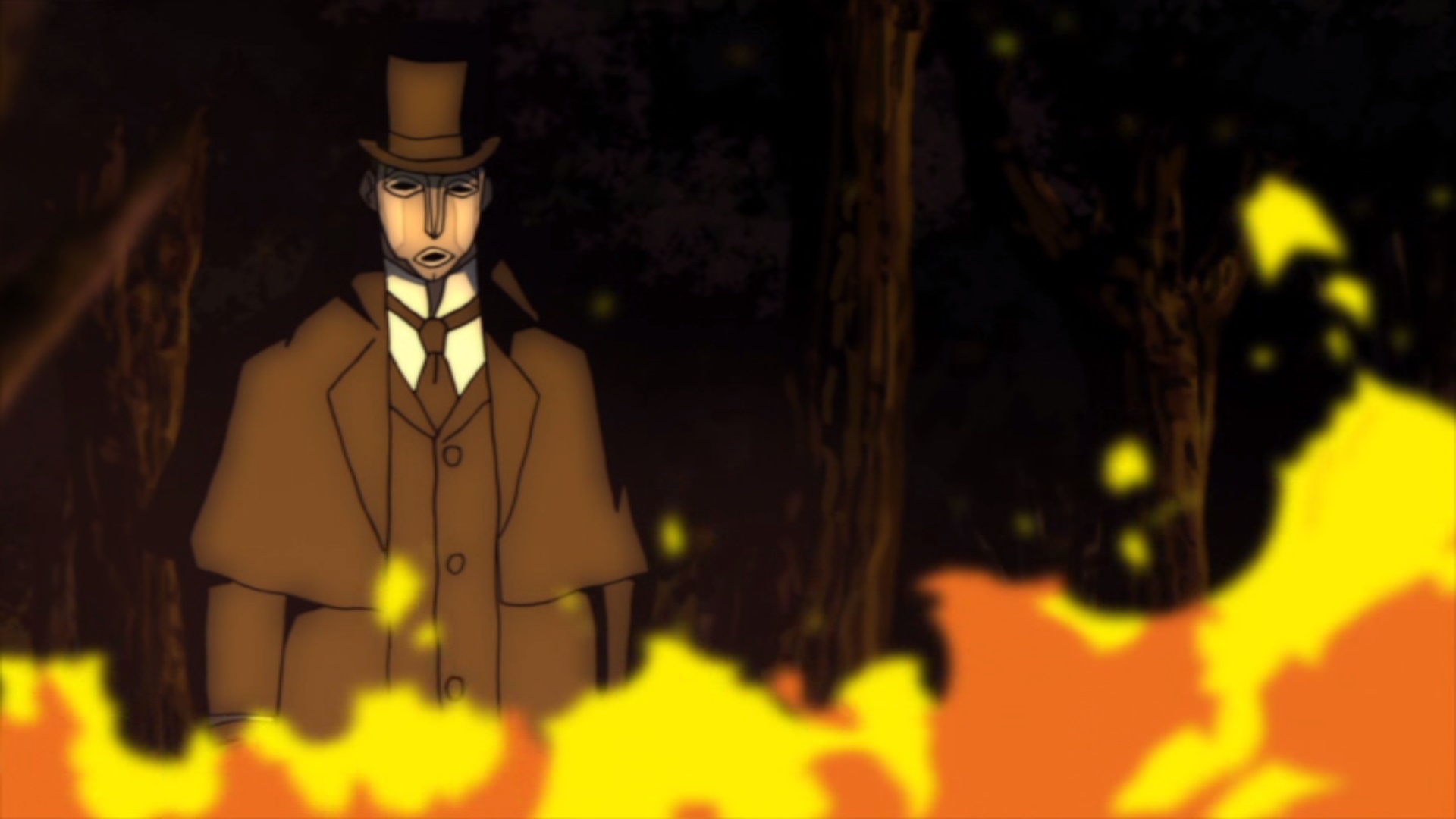
Fans of Tim Burton’s Batman (1989) will spot a reference to the ill-fated Johnny Gobs early in the film. There are also plenty of nods to Arthur Conan Doyle’s Sherlock Holmes stories scattered throughout the movie. The Robins are clearly modelled on the Baker Street Irregulars, Bruce quotes the famous line about eliminating the impossible from The Sign of Four (1890), and in another scene he sends a coded message to Alfred using the stick men cipher from ‘The Adventure of the Dancing Men’ (1903). The film also features a fight scene between Batman and the Ripper aboard a dirigible, which is clearly inspired by the climactic showdown aboard LeRoi’s airship in Master of the Future. The airship in the comic was a reference to the Albatross in Jules Verne’s Robur the Conqueror (1886), and the character of LeRoi was inspired by Robur himself. But since LeRoi is absent here, the presence of the airship loses its intertextual significance in relation to Verne's story.
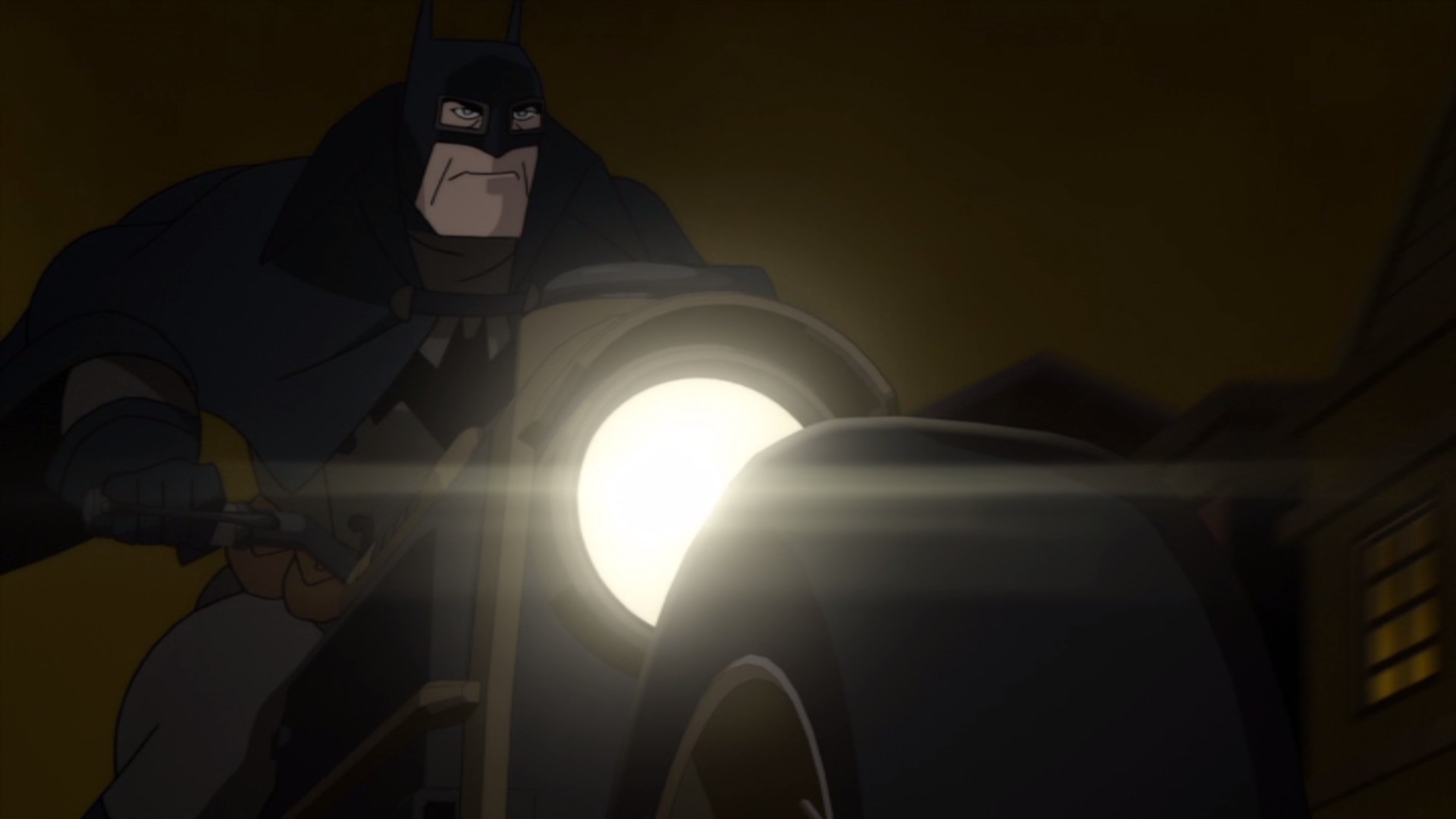
Sadly the animation does not attempt to capture Mignola’s distinctive art style, though the colour palette retains the dark browns and blacks of the original panels. The design of the Gotham City architecture is superb and deserves special mention. It’s been a while since we’ve seen such a stylised cinematic take on Batman’s hometown, and every gas-lit street is suffused with its own air of gothic menace. Unfortunately the animation suffers from a low frame rate in certain places and some of the action looks choppy in motion. The voice cast includes the ever reliable Bruce Greenwood in the lead, along with Jennifer Carpenter as Selina Kyle, Scott Patterson as Gordon, and Anthony Head as Alfred. They all turn in solid performances, though I can’t help feeling it might have been better to have someone new play Batman this time around. Greenwood is excellent in the role, but since this is such a unique interpretation of the character I would have liked him to have spoken with an equally unique voice. Perhaps a clipped Mid-Atlantic accent delivered by someone other than Greenwood, Kevin Conroy or Jason O’Mara.
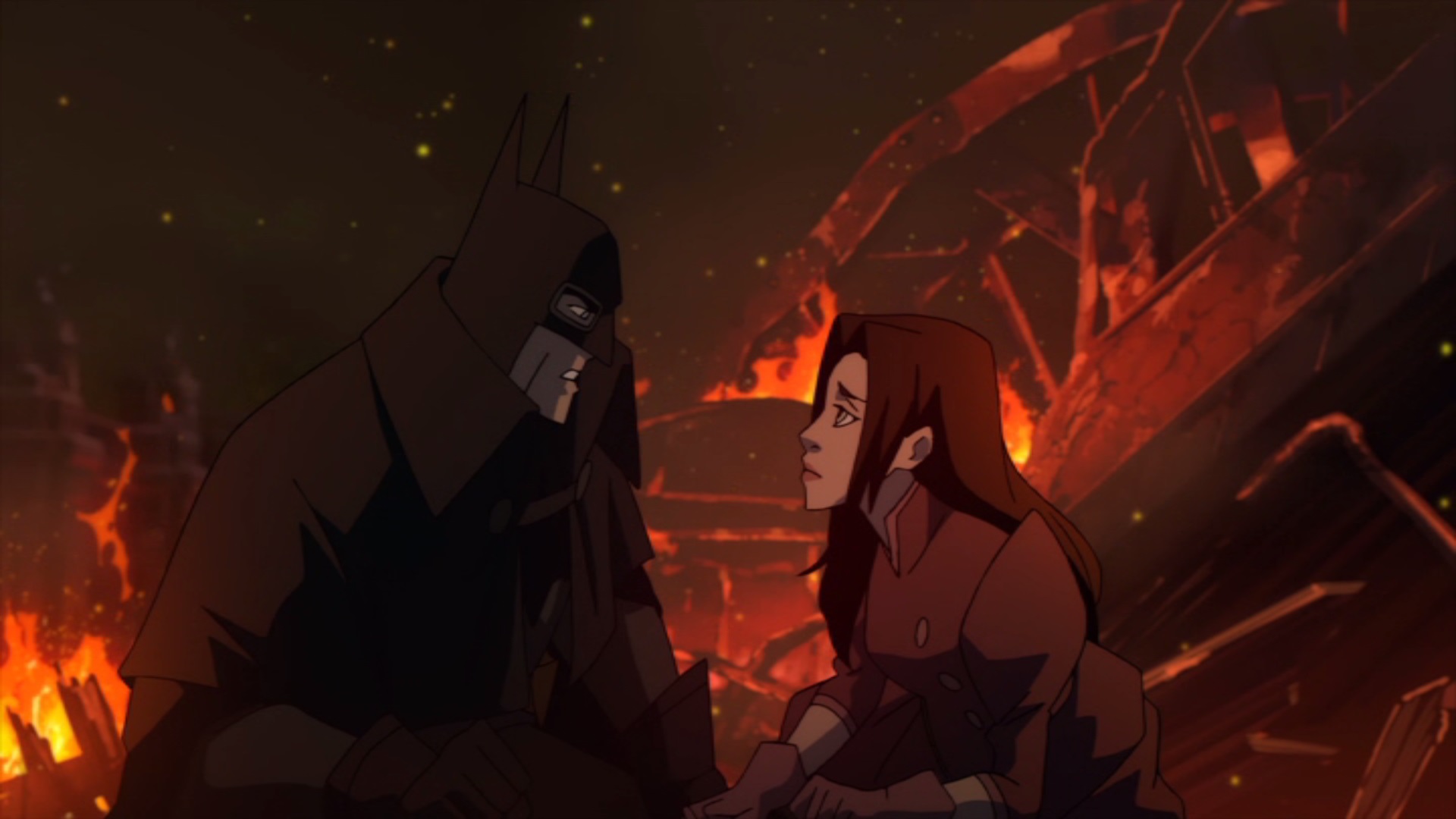
Gotham by Gaslight is a perfectly serviceable Batman story in its own right, boasting a fine voice cast and a strong atmosphere. But the quality of animation is underwhelming and it’s simply not a satisfying adaptation of the 1989 graphic novel from which it takes its name. Some might argue the story needed changing to fit the feature length runtime, but I think it would have been preferable to divide that runtime amongst two stories – one based on Gotham by Gaslight, the other on Master of the Future – and make it a portmanteau film similar to Batman: Gotham Knight (2008). Alternatively they could have simply made a shorter but more faithful film based solely on the 1989 book. Viewers who’ve never read Augustyn and Mignola’s comic will probably get the most out of this. But for those of us who’ve been keenly anticipating a faithful adaptation, I’m afraid we’ll have to go on waiting a little longer.
An atmospheric thriller that doesn’t quite capture the brilliance of its source material.
6/10
comments powered by Disqus












by Silver Nemesis
by Silver Nemesis
by Silver Nemesis
by The Joker
by The Joker
by The Joker
by The Joker
by The Dark Knight
by Silver Nemesis
by The Dark Knight